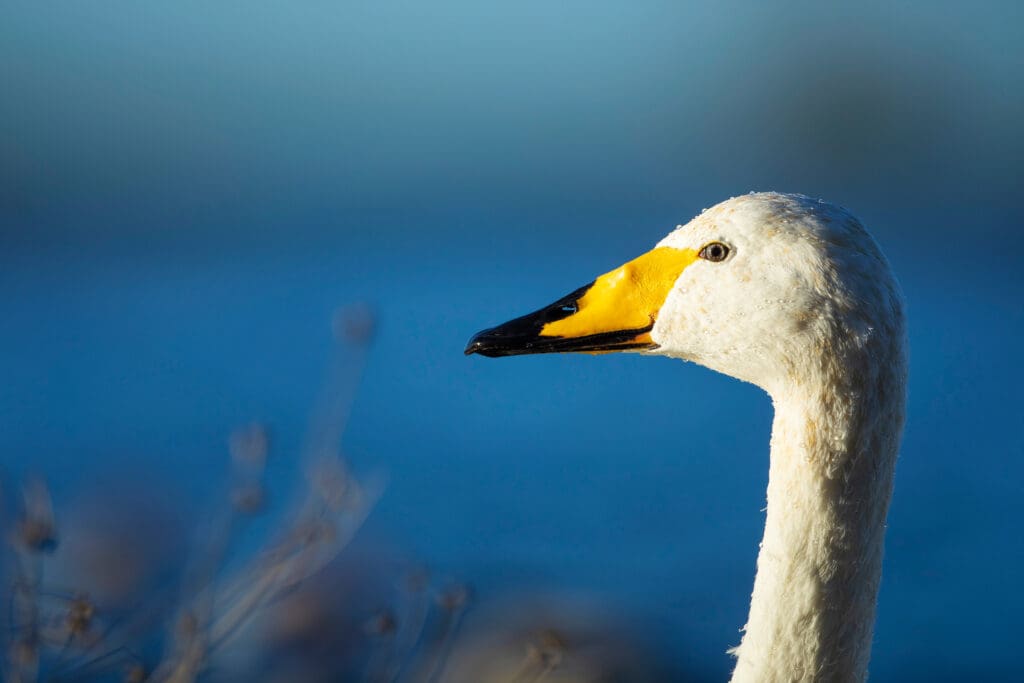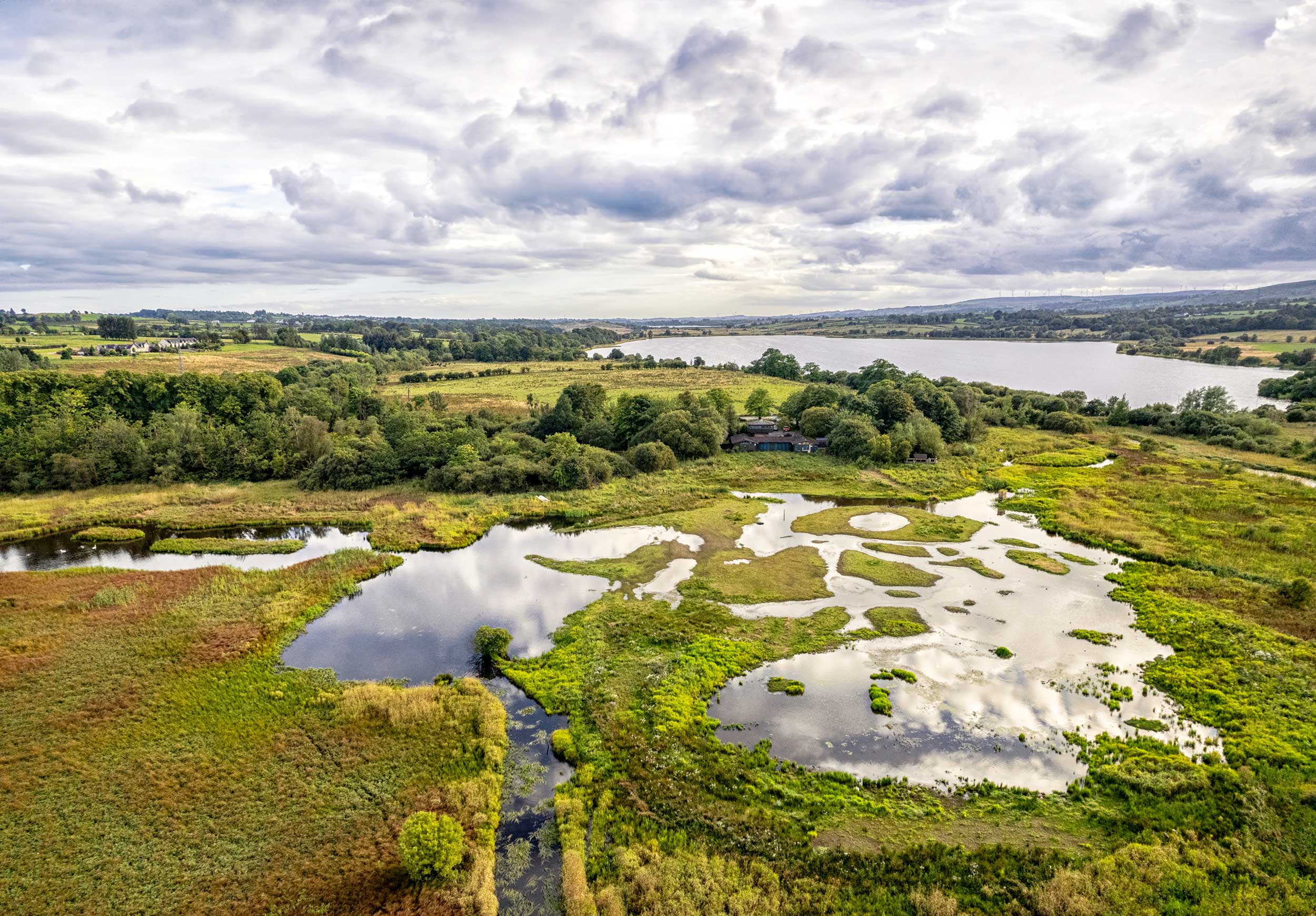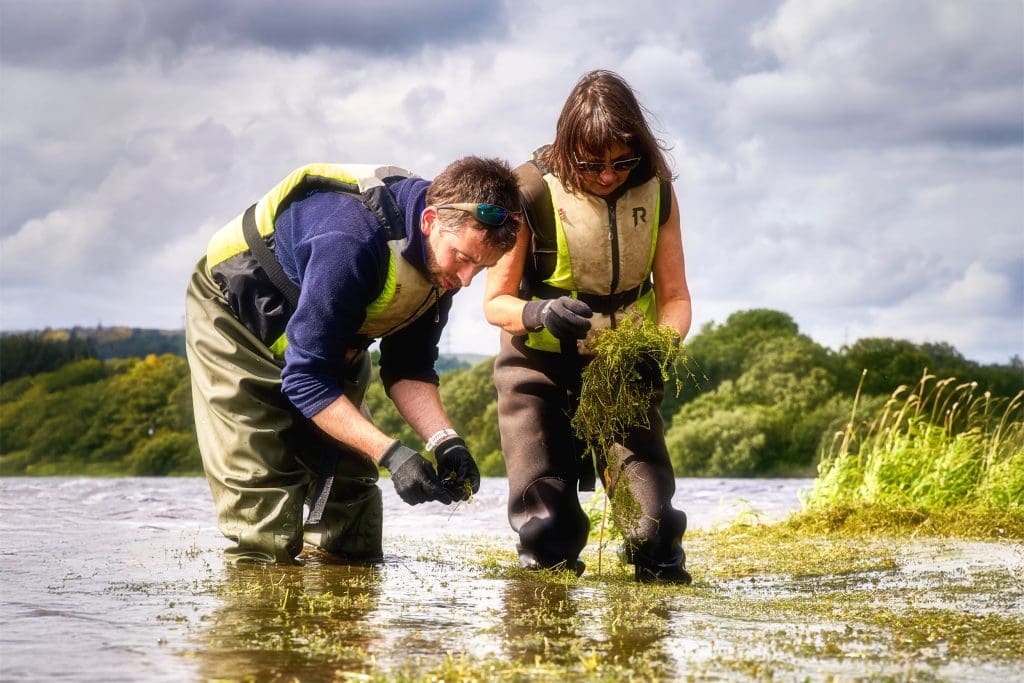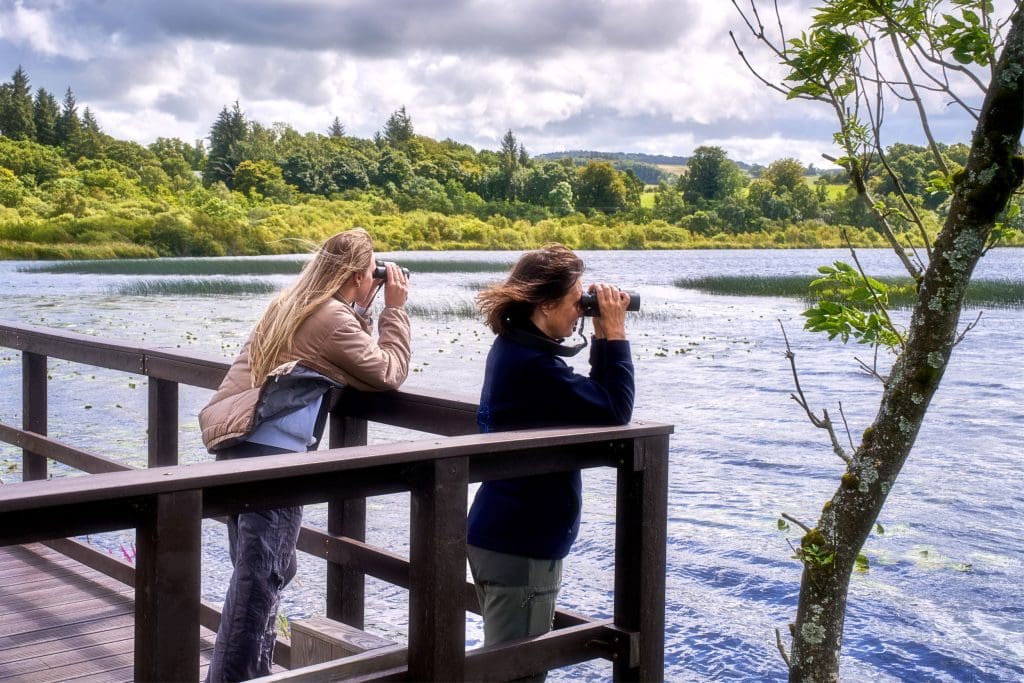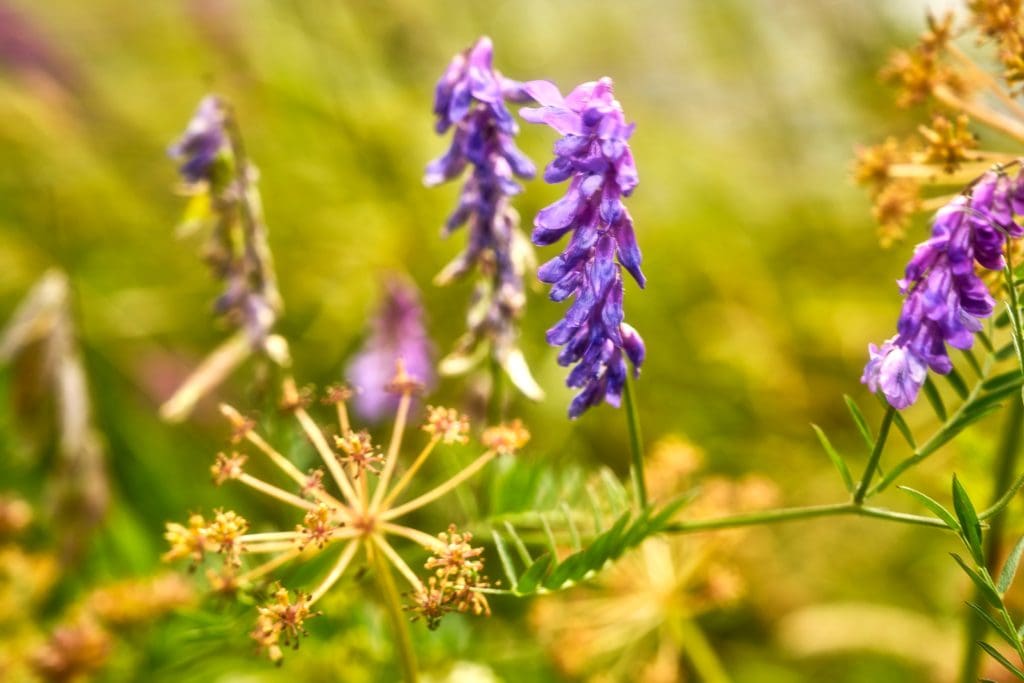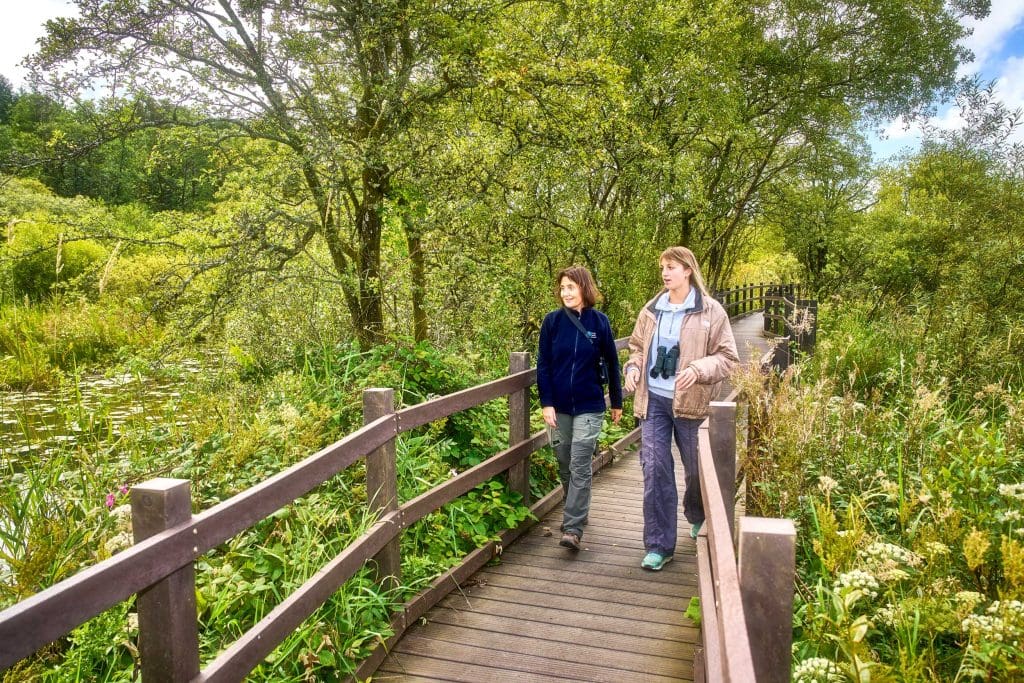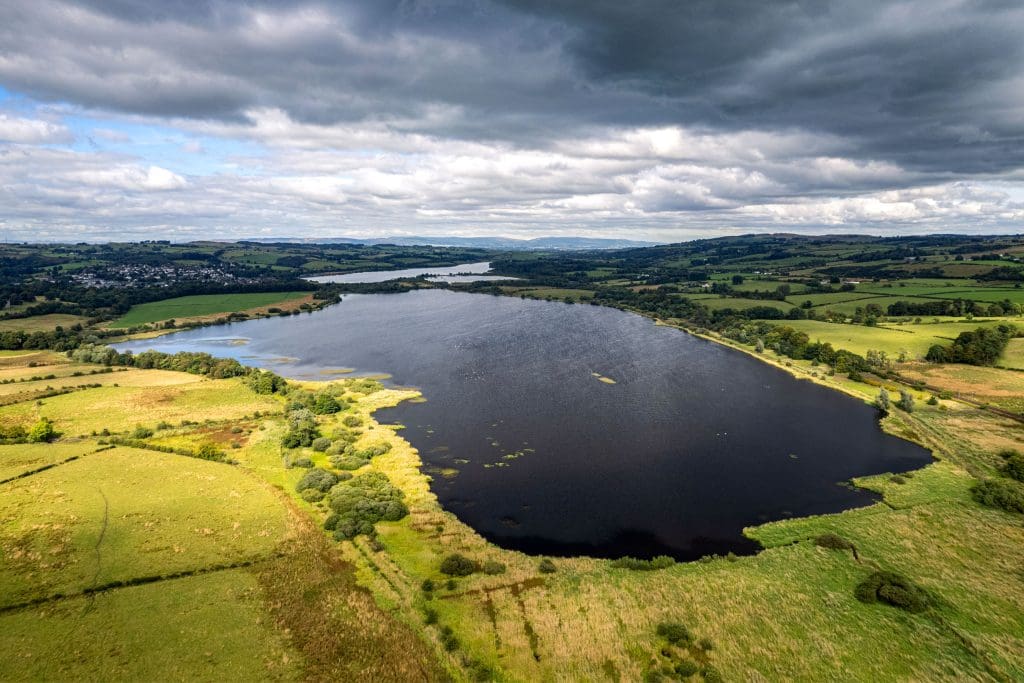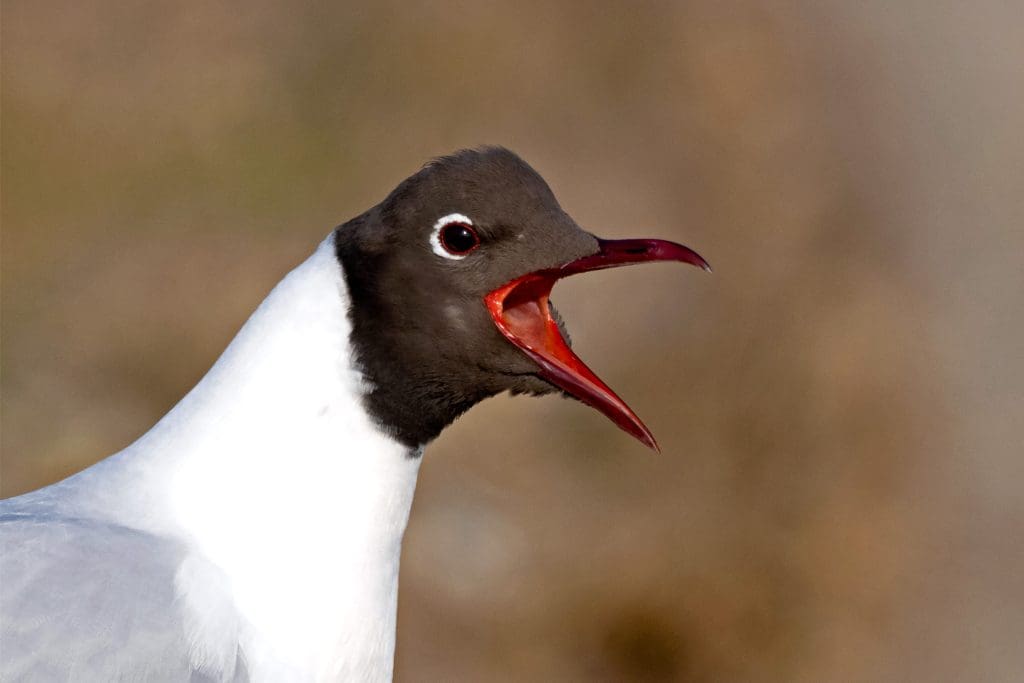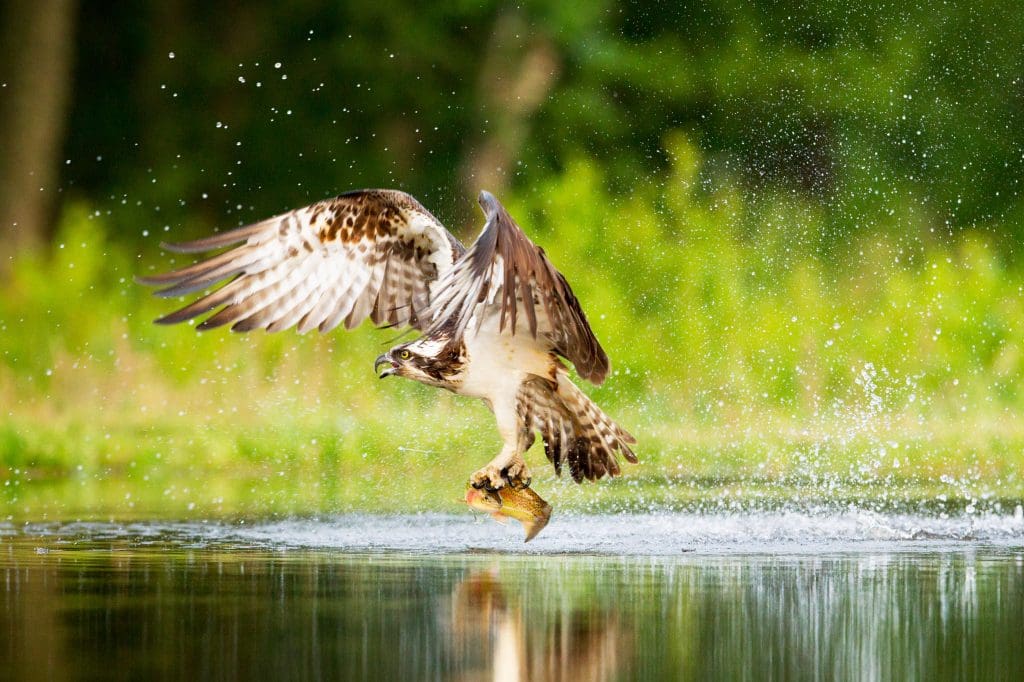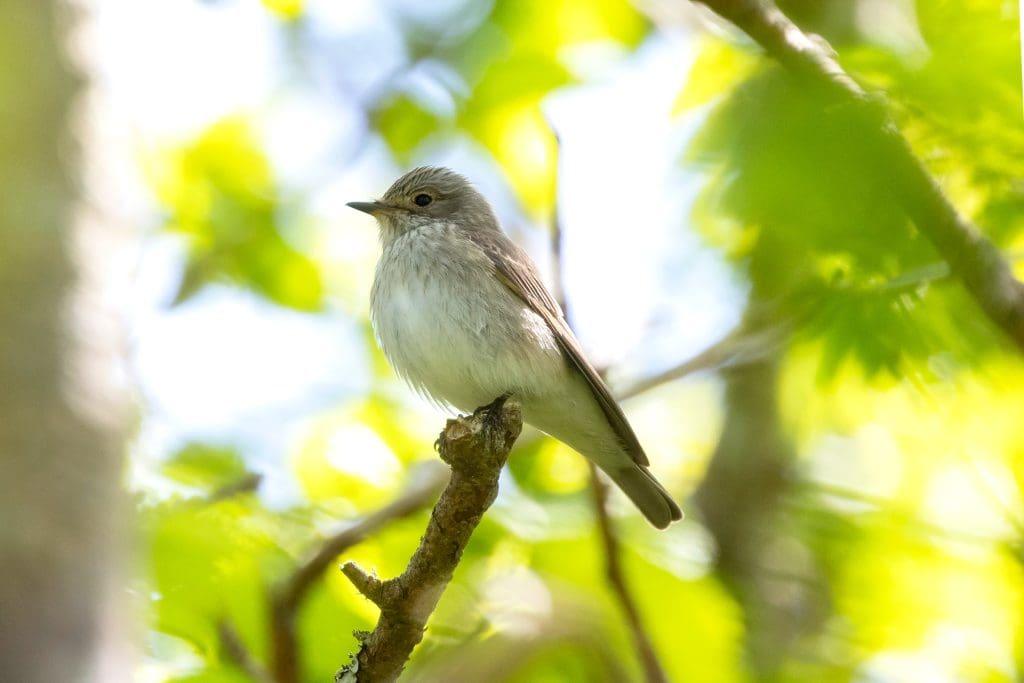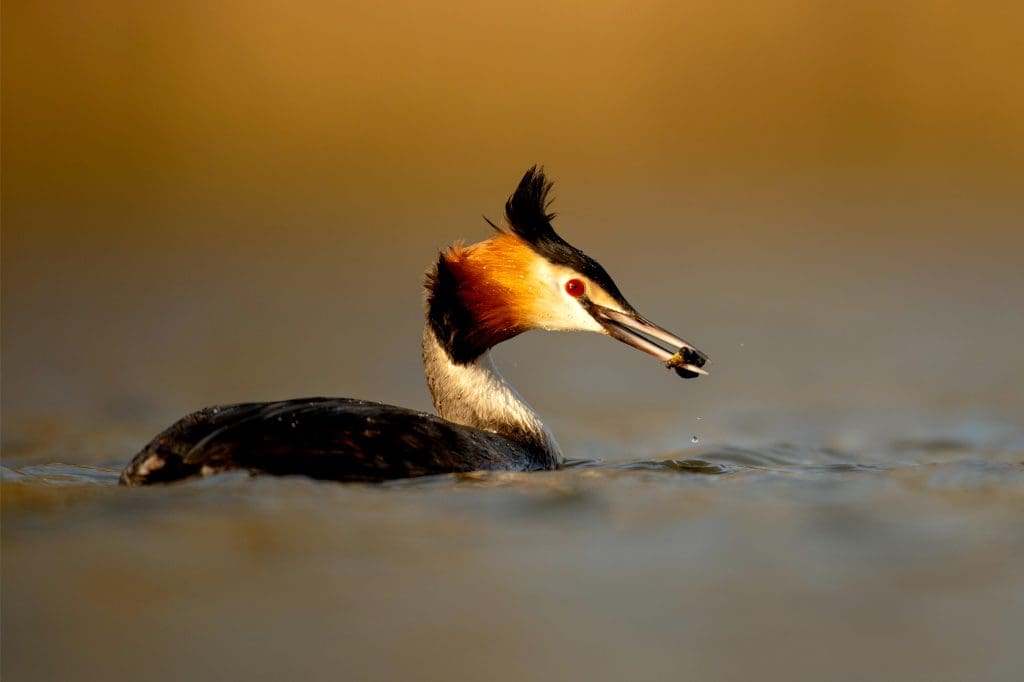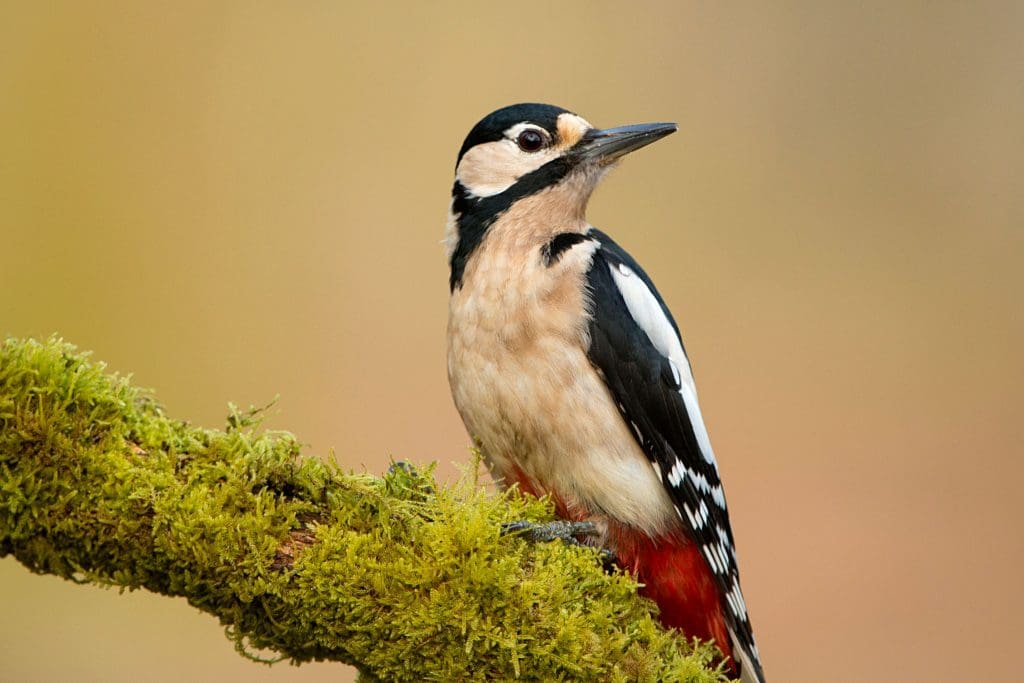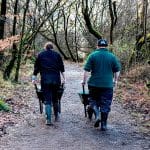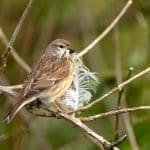Sunlight spills across a glassy loch scattered with islands. Swallows dive low, skimming the billowing cloud reflections that drift across the water’s surface. A Great Crested Grebe emerges from the reeds leaving a trail of ripples, its chestnut ruff brilliant in the morning light. This is the scene stretching before me as I cast my eyes out across RSPB Lochwinnoch.
Captivated, I’m eager to explore, but first I meet Site Manager Tabby Lamont and Warden Dan Snowdon. After a warm welcome, they go on to share the nature reserve’s fascinating history.
Lochwinnoch is a remnant of a vast glacial lake that was drained for agricultural use in the early 18th century. Ditches and reinforced embankments, or bunds, were built, creating three distinct sites managed for grazing and hay meadows. During the interwar period, the infrastructure fell into disrepair and Lochwinnoch reflooded as three distinct water bodies, separated by the bunds.
‘Lochwinnoch is designed to reconnect visitors with nature and inspire responsible interaction’
Since 1973, the RSPB has managed Barr Loch and Aird Meadow Loch, which neighbour the council-owned Castle Semple Loch. Despite early attempts to restore natural seasonality by rejoining the two lochs, centuries of human intervention had significantly altered the natural system. So, in 2019, Tabby and Dan implemented a new plan aiming to redevelop habitats and natural processes within the artificial system. “We’ve made it our goal to increase biodiversity by establishing functioning habitat mosaics,” says Tabby. “In 2024, Lochwinnoch saw the highest population of breeding bird species present in 50 years.”
Visitor guide: RSPB Lochwinnoch
Getting there
The nearest train station is Lochwinnoch railway station, located 400m south-east of the visitor centre. The nearest bus stops are a 10–15 minute walk away on the A737 at Roadhead roundabout and on the A760 at Newton of Barr. National Cycle Route 7 runs close to the nature reserve, with the link route to Lochwinnoch station passing the entrance.
Entry
Free entry for both RSPB and non-RSPB members. Parking is free for RSPB members and £4 for non-members.
Season Highlights
In summer, keep a sharp eye out for magnificent Great Crested Grebes as well as Spotted Flycatchers, Migrant Hawker dragonflies and migrating waders. As autumn approaches, the woodland will turn into a colourful spectacle, framed by a forest floor speckled with fungi.
This season’s star species
Osprey, Spotted Flycatcher, Great Crested Grebe, Migrant Hawker dragonfly, Little Ringed Plover and Great Spotted Woodpecker
Accessibility
Parking: 30 car parking spaces, with four dedicated shop customer spaces and three Blue Badge spaces, all about 20m from the visitor centre.
Wheelchairs: The car park is gravel with an uneven surface. There are three partly signposted flat trails as well as an all-access main trail. Two of the four picnic benches have a single-wheelchair space.
Dogs: Dogs are allowed on all footpaths and well-behaved dogs are welcome in the visitor centre. Assistance dogs are welcome in all parts of the reserve.
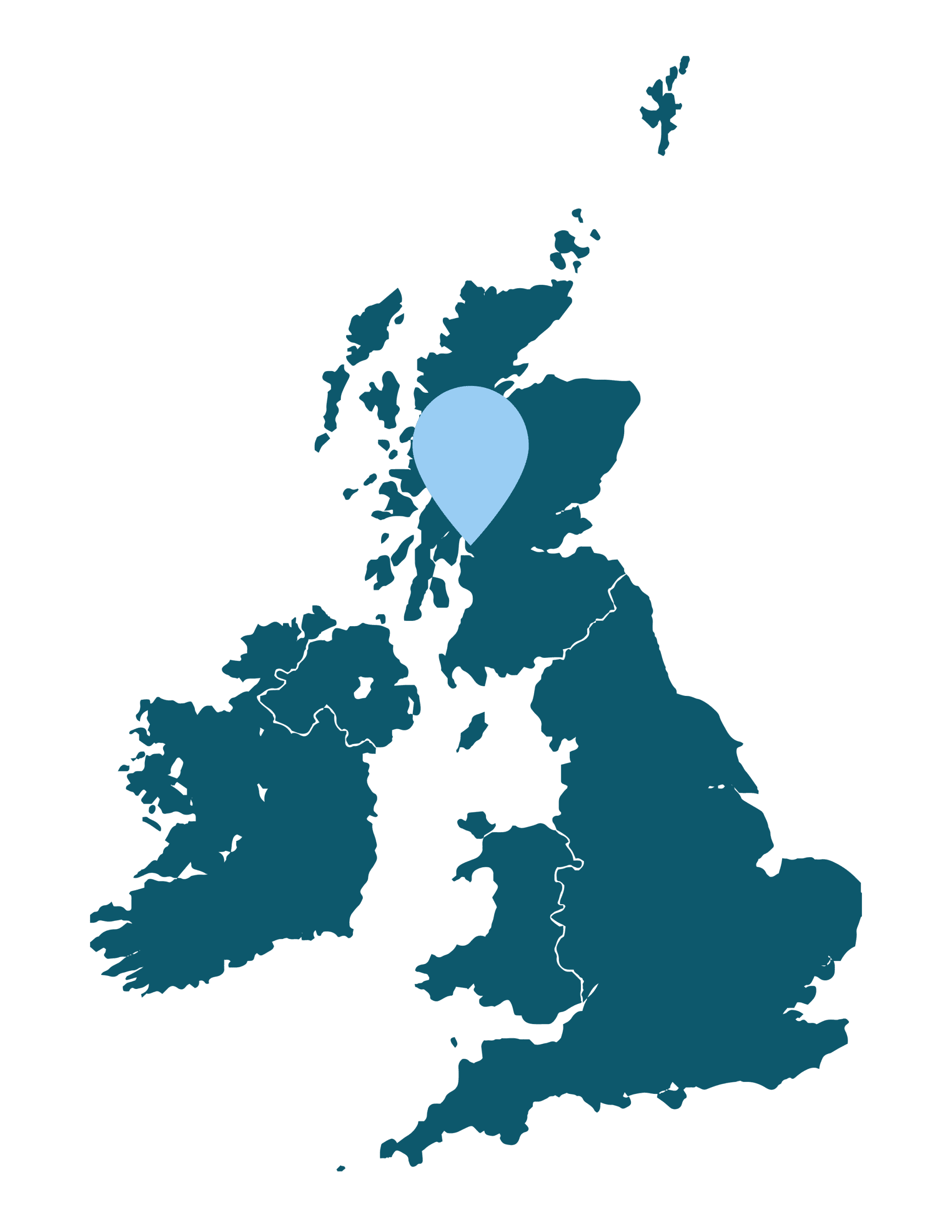
Gateway to nature
We set off to Channel Hide overlooking Aird Meadow Loch. A statuesque head rises between the reeds; it’s a Grey Heron, its beady eye scanning the glinting waters. Dan tells me that the Perch, Pike, Roach, eels and trout swimming below the surface of the loch attract Osprey, whose striking silhouettes are often seen torpedoing towards the water.
On the scrape, a pair of Shovelers preen as Lapwings and Greenshanks patter across the mud. “We designed this shallow wetland in 2020 to create a wet edge habitat, essentially ensuring sufficient wader feeding sites are available at any water level,” Dan explains. Since then, Common Sandpipers and Redshanks have successfully returned to the reserve to breed and Little Ringed Plovers were spotted for the first time.
Beyond the open waters of the loch, reedbeds mark the transition to fenland and floating fen, which rises and falls with the water levels, buoyed by the air held within its root structure. Gradually, the reeds become interspersed with wetland trees, such as willows, before transitioning to woodland and a view to the Renfrewshire hills beyond.
I marvel at the diversity of habitats, all visible from this one lookout. A thriving wildlife haven and an accessible one, too, Lochwinnoch is on the doorstep of Lochwinnoch railway station and only 25 minutes from central Glasgow. Tabby’s spot on when describing this site as a ‘gateway to nature’.
Discover wetland birds at RSPB Lochwinnoch. Video: The RSPB
Restoring natural balance
A towering canopy of beech, ash and oak trees shelters the woodland adventure trail unfurling ahead. We pass the wildlife garden, abuzz with insects and the scent of lavender, before encountering the natural play area where children clamber along the balance log and build dens.
I chat with a couple who are showing their grandchildren around the nature reserve. “We make sure we visit Lochwinnoch every season,” they say. “Each one brings new wildlife and scenery.”
Moments later, a Migrant Hawker dragonfly whizzes past as we approach a pond. “In 2022, we discovered invasive New Zealand Pigmyweed in the pond,” Tabby says, “so we devised the pesticide-free methodology to quickly contain and eradicate it before it dominated the wetlands. We relocated the pond and monitor it consistently.”
Along the nearby fairy trail, Hedgehog houses and bird boxes are neighbours to toadstools and gnome homes. We peek into the bug hotels, viewing the inhabiting mining bee larvae through glass to limit disturbance. Tabby explains that Lochwinnoch is “designed to reconnect visitors with nature and inspire responsible interaction with it. If we want nature in our lives, we can’t view it as something to exploit – our interaction must be balanced.”
She continues, explaining some of the ongoing ‘behind-the-scenes’ conservation efforts supporting this ecosystem: “While this woodland appears wild and unkept, it was Dan’s glade-clearing work that attracted nesting Spotted Flycatchers within a week!”
Dan adds: “We’re managing for biodiversity by replacing the activities of missing species. For example, we’re imitating grazing with brush cutting or glade clearing. Restoring natural processes makes habitats more self-sustaining and resilient to pressures such as climate change and invasive species.”
The path traces the loch’s edge, transforming into a leafy tunnel with sunlight filtering through like scattered rays of a disco ball. To one side, a mossy jungle unfolds. Deadwood and the exposed roots of fallen trees provide habitats for species such as Bank Vole and Wrens, while the shallow pools formed in their depressions support amphibians and invertebrates. To the other side, fungi and ferns spout from the mossy bunds. Wet woodland dripping with Bearded Lichen sprawls towards Aird Meadow Loch beyond. I catch glimpses of Swallows darting across the water. “Their presence is a key indicator of habitat quality,” Dan says. “It shows these wetlands support the insects on which they feed.”
We pause in a hide along the trail. The calls of Black-headed Gulls fill the air. Lochwinnoch lost its colony of this species in the mid-’90s due to habitat pressures and the arrival of invasive American Mink, which eat eggs and nesting chicks. Since the team deployed several gull rafts in 2018, the returning colony is now 80 pairs strong.
Dan breaks down the ecological interconnectivities underpinning this comeback: “Otters have become more prevalent at Lochwinnoch in recent years, pushing out mink and effectively reducing their population. We think this balance has helped Black-headed Gull numbers recover. In turn, the gulls’ predator-mobbing behaviour may have contributed to this year’s record-high number of breeding species because predators have been deterred from other nests in the area.” It’s clear that this is another self-sustaining process being reinstated here, creating a ripple of positive impacts.
Taking to the water
The woodland trail ends at Todd’s seat, a spectacular outlook to Castle Semple Loch and the distant hillside of Clyde Muirshiel, Scotland’s largest regional park. Here, we meet long-term RSPB member and volunteer Susan.
“I’ve been visiting this reserve for more than 20 years,” Susan shares. “I come here most days. This view never disappoints, especially with more Otters about recently.” Like many RSPB nature reserves, Lochwinnoch relies on dedicated volunteers such as Susan who give up their valuable time to help run the nature reserve.
We follow the boardwalk skirting the perimeter of the RSPB site. Made of recycled plastic and built along the narrow belt of land created by the stone-clad bunds, the boardwalk gives you the impression that you’re floating atop the water with Aird Meadow and Castle Semple Loch to either side.
Tabby points out Purple-loosestrife and Rosebay Willowherb stretching up to greet us. Initially, Aird Meadow Loch is still, laden with lily pads and whispering reeds. But as we progress, we align with the Loch’s livelier open waters. More exposed to the elements, the blustery walkway is alive with movement. It feels wild and uplifting, like we’ve ventured to a different place altogether.
‘I started coming here to escape life: studying and work. It really helped my mental health… this place is my refuge’
Barr Loch makes up two-thirds of the RSPB Lochwinnoch nature reserve. “Barr Loch’s managed primarily for conservation,” Tabby informs me as we head towards the viewpoint later that afternoon. “We manage access to reduce disturbance to wildlife.”
The path hums with insects. We soon encounter Ellie, a volunteer, who is almost lost among the pink Himalayan Balsam as she uproots it to control the invasive species’ spread. “It’s incredibly problematic because it grows in these tall, dense stands that crowd out other vegetation and consistently outcompete native plants for pollinators,” Ellie explains.
“The balsam seed pods ‘explode’, making it effective at scattering its seeds, especially near water, so we uproot plants before seeding occurs.”
At the viewpoint, Barr Loch is vast and glimmering, and all the more special knowing it provided vital breeding habitat for 11 pairs of Great Crested Grebes, including 18 chicks, last year. In winter, spectacles of up to 2,500 birds gather here, including species such as Tufted Duck and Goldeneye.
A place of sanctuary
Back at the visitor centre, I pause to reflect and look out over the jigsaw of habitats with RSPB volunteer Rachel. Despite my tired feet, I feel rejuvenated. Rachel shares: “I started coming here to escape life: studying and work. It really helped my mental health, so I started volunteering. Today’s actually my day off, but this place is my refuge.”
Her experience resonates; Lochwinnoch is indeed a gateway to immerse yourself in nature – a place to reconnect. It echoes Tabby’s words from earlier today: “Working here day-to-day with new conservation challenges around every corner, it’s easy to forget how many people interact with Lochwinnoch, and you never know if or how this place plays a role in someone’s life. What we do know is, the more people come, the more people will value nature – and that’s the key to protecting it.”

Discover a new reserve
All across the country there are RSPB nature reserves for you to visit. Take in the sights at your own pace, join a guided tour or book on to one of our many wonderful events to make the most of your trip. There’s something for everyone.
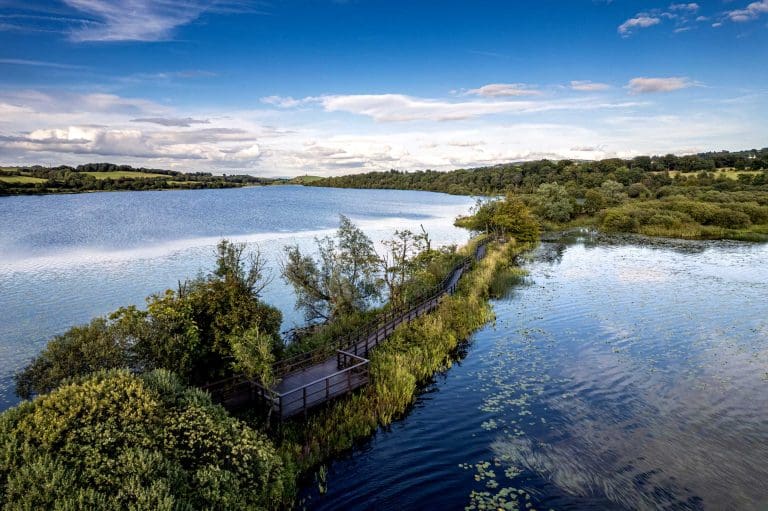
The path between lochs at Lochwinnoch. Photo: Euan Myles
You might also like

Outdoor fun for everyone – RSPB days out
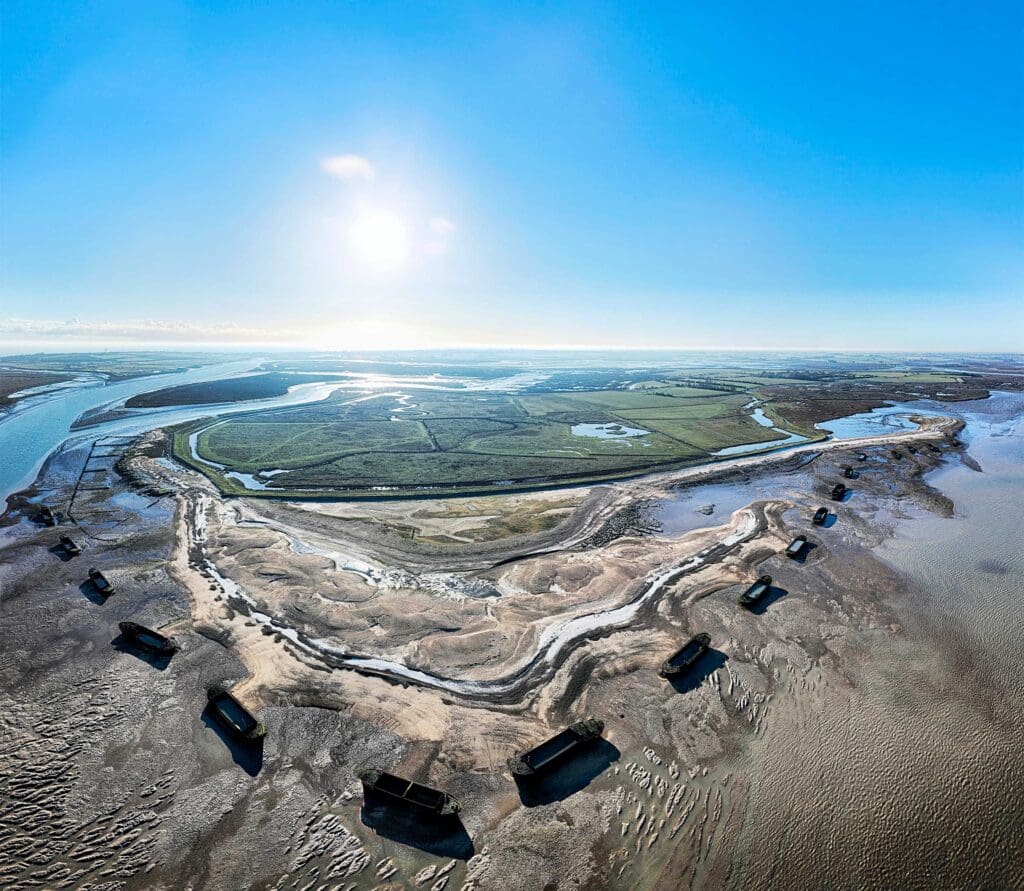
A wetland vision
